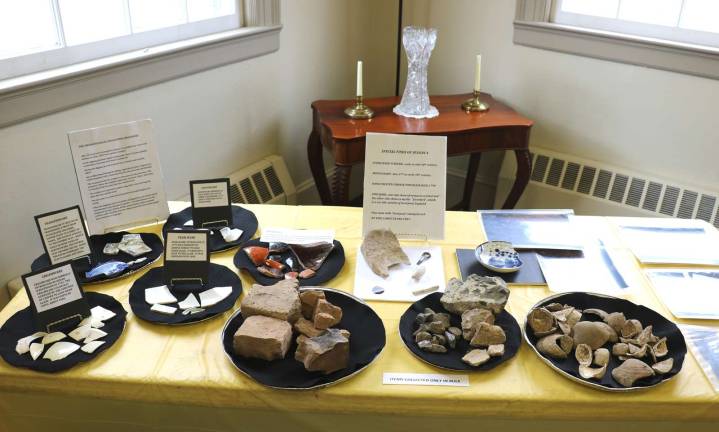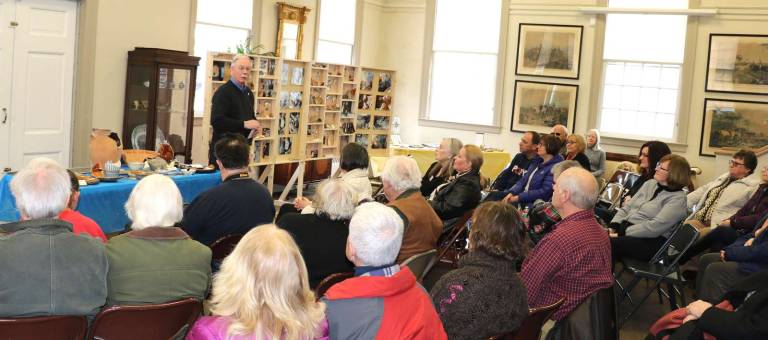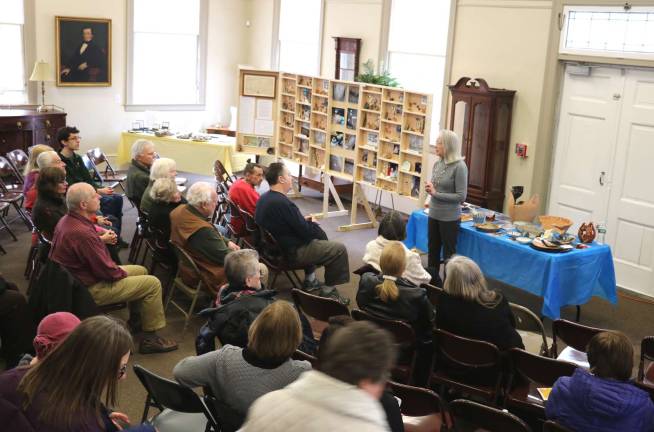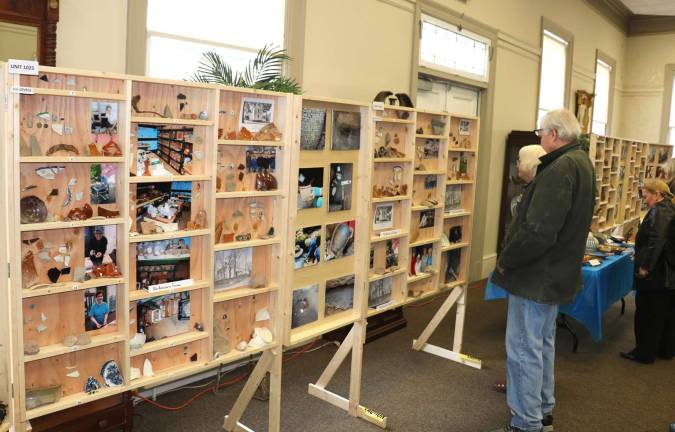Historical society presented 'Fragments from the Past' event at Buckbee Center




By Roger Gavan
WARWICK — The presentation was called "Fragments from the Past" because the most recent archeological excavation at the historic Shingle House unearthed a midden, or what we would call a trash pile.
And that, in turn, was largely responsible for some 15,000 fragments of items from the past.
On Sunday, March 25, the Warwick Historical Society's archaeology team presented "Shingle Dig Season 4: Fragments From The Past."
The event, which featured elaborate displays of items collected, including wall units dividing the finds by the layers of excavation.
The discovery first made by fourth gradersThe 1764 Shingle House on Forester Avenue is the oldest remaining building in the Village of Warwick. Daniel Burt built this New England saltbox for his son and legend has it that the shingles for the sides and roof of this house were hewn from a single tree.
At the beginning of the event, Cathryn Anders, president of the Warwick Historical Society, welcomed the guests and explained that the Shingle Dig had its origin when a group of fourth grade students from the society's Summer Camp, who were participating in an archeological dig behind the structure, uncovered the remains of a cistern.
That led George Knight, a volunteer at the Warwick Historical Society Archive, to do more research on the historic house, which is one of the buildings owned and maintained by the society.
Level sevenIn 2015 a team of volunteers began a dig that unearthed numerous artifacts from the late eighteenth and early nineteenth centuries.
"I had the high honor and distinct privilege of working with a wonderful team both during the field season, then in the lab, and finally in preparing the presentation," said Knight.
He went on to explain that something significant happened at level seven, between 24 and 28 inches down, because nearly half of the artifacts were found in that four-inch level.
"It was so thickly populated," he said, "that it took several work days to get through. We were bringing up ceramics, crockery, bones, shell, brick and mortar literally by the boxful and bucketful."
Knight and his team believe that level seven dated to the occupancy of Grinnell Burt, president of the Lehigh and Hudson River Railway.
And that tied closely to what they had estimated as the time frame for the expansion of the house to its current footprint.
During the 2017 dig the team also found the remains of an early springhouse, that was constructed over a spring, perhaps as far back as 1770, to be used for refrigeration or drinking water.
"In terms of special artifacts," he said, "we found painted Chinese porcelain dating to around 1790, a mouth harp from between 1650 and 1750, an 1803 U.S. Large Cent, a clay pipe marked with the Freemasons symbol on one side and the Liverbird, the emblem of Liverpool, England, on the other, along with a stem section stamped 'Liverpool."
This coming year's explorationFor 2018, the team's focus will be on determining whether any significant portions of the stone house walls are still standing below ground.
"We know of one short section about 36 inches high," said Knight, "but we want to see if there is more down there. We will also try to excavate a cistern close to the house, but that will depend on whether or not it would put the integrity of one of the porch foundation pilings in jeopardy.
"Finally, we want to expand the excavation of the hearth area at the north end of the stone house." Knight added. "If the hearth is still in place, it will be a very significant find and will tell us a lot about the early Shingle House days."
For additional information, or to become a member of the Warwick Historical Society, call 845 986-3236 or visit www.whsny.org.